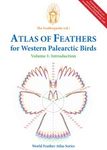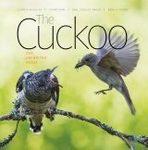"We settled quickly on this as our winning book. While ostensibly a book for students and post-graduate academics, it covers a subject so close to the heart of the average birdwatcher as to be of very wide appeal, and is written in Ians easily accessible style. Illustrations are abundant and exceptionally clear, and Keith Brockies wonderful artwork enhances the cover and the chapter headings. The publishers have set exemplary high standards in the presentation copy-editing. As the BB reviewer put it, this book is a tour de force. Ian becomes the first double-winner as a solo author: his Population Ecology of Raptors was the first ever BB Best Birds Book."
– British Birds, March-April 2005
"Newton's book is a masterful achievement. The information content is phenomenal and the easy reading style and logical layout make it a pleasure to work through [...] During the course of last year, Newton's book was passed from one student in my laboratory to another, and another, and another. Every single one of them actually read the book, and found it wonderfully stimulating. I can think of no greater compliment."
– Rauri CK Bowie, Center of Excellence at the Percy FitzPatrick Institute, Department of Botany and Zoology, Stellenbosch University, Matieland, South Africa
"According to the back, This book provides a fresh synthesis of knowledge of species formation in birds and of the factors that influence their geographical distributions [...] No other book currently available covers this range of subject matter or attempts to combine it into a coherent whole. That is quite a claim, but by and large I find it justified [...] the book is written in simple language throughout and will be easily understood by interested bird-watchers and other lay readers [...] I would recommend everybody to seek it out, to pick it up, to give it a short read here and there, and to look at the many figures and tables [...] I think the book has its greatest strength in bringing newcomers in the field and interested amateurs up to date with much exciting recent research: there are no scary equations and hardly any statistical test are presented [...] Newton provides some big answers as well as outlines big unknowns [...] this impressive piece of work would serve right as a source for examples for courses on ecology, evolution or biogeography, and I would recommend it as a very useful yet highly enjoyable self-study book for everybody with an interest in one or more of those areas, or in birds in general. Ian, congratulations and thank you very much for writing this book."
– Pim Edelaar, Leiden University, Puerto Madryn, Argentina
"[...] the summaries are often detailed, thought-provoking, and interesting [...] the work that Newton has done in compiling the basic information will make comparative studies easier."
– The Auk, Robert M. Zink and Andrew W. Jones, Bell Museum and Department of Ecology, Evolution and Behavior, University of Minnesota, U.S.A.
"[...] provides the best available overview of the origin, distribution, and extinction of bird species on a global scale."
– A. Townsend Peterson, Science
"This is an impressive work, a synthesis of two main and interconnected strands of ornithological knowledge and research, both of them treated in all their aspects [...] It is a monumental achievement, unlikely to be superseded for a long time."
– British Ornithologists' Union
" [...] a readable, balanced and comprehensive review that will become a standard textbook for courses in avian biogeography. [...] I believe that this book will be warmly welcomed by bird biologists and enthusiasts alike."
– Trends in Ecology & Evolution
" [...] The author integrates the latest information from the fields making up biogeography and incorporates advances in molecular biology that influence our understanding of speciation [...] Provides a combined subject and species index, glossary, and extensive reference sections."
– Southeastern Naturalist

































